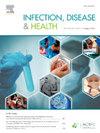Identifying gaps in infection prevention and control practice in Australian residential aged care using scenarios
IF 2
Q2 PUBLIC, ENVIRONMENTAL & OCCUPATIONAL HEALTH
引用次数: 0
Abstract
Background
Older people living in residential aged care are vulnerable to infections. High quality infection prevention and control (IPC) practice is therefore vital in this setting. It is important to assess current IPC practice to identify areas where best practice is lacking, and where improvement efforts could most effectively be targeted. The aim of this study was to identify evidence-practice gaps in IPC practice in residential aged care.
Methods
This study used two scenarios to assess use of a range of standard and transmission-based precautions in residential aged care. Systematic methods were used to design the scenarios. Twenty-seven staff from four residential aged care facilities participated in semi-structured interviews. Participants were presented with the scenarios and asked what IPC actions they would take in everyday practice. Individual and team-based practice was explored. Participants reported practices were then compared to evidence-based practice.
Results
Results from both scenarios were combined and a total of 11 evidence-practice gaps identified. These included gaps in performing hand hygiene before touching a resident (for example, when helping a resident transfer) and not donning protective eyewear or face shield before taking a nasal/throat swab on the resident with suspected respiratory viral infection.
Conclusion
The use of scenarios provided a practical and acceptable method to rapidly assess a range of IPC practices among a diverse group of participants. The IPC evidence-practice gaps identified will be used in the next phase of work where barriers to uptake of the identified IPC evidence-practice gaps will be explored.
使用情景识别澳大利亚老年住宅护理感染预防和控制实践中的差距。
背景:居住在养老院的老年人易受感染。因此,在这种情况下,高质量的感染预防和控制(IPC)实践至关重要。重要的是评估目前的IPC实践,以确定缺乏最佳实践的领域,以及可以最有效地针对哪些领域进行改进工作。本研究的目的是确定在IPC实践在住宅老年护理的差距。方法:本研究采用两种情况来评估住宅老年护理中一系列标准和基于传播的预防措施的使用情况。采用系统的方法进行场景设计。来自四家安老院舍的二十七名员工参与了半结构化访谈。向参与者展示了这些场景,并询问他们在日常实践中会采取哪些IPC行动。探索了个人和团队实践。然后将参与者报告的实践与基于证据的实践进行比较。结果:将两种情况的结果结合起来,共确定了11个证据-实践差距。其中包括在接触居民之前(例如,在帮助居民转院时)进行手卫生的空白,以及在对疑似呼吸道病毒感染的居民进行鼻/咽拭子拭子之前未戴防护眼镜或面罩。结论:场景的使用提供了一种实用且可接受的方法来快速评估不同参与者群体的IPC实践。已确定的IPC证据-实践差距将用于下一阶段的工作,届时将探索利用已确定的IPC证据-实践差距的障碍。
本文章由计算机程序翻译,如有差异,请以英文原文为准。
求助全文
约1分钟内获得全文
求助全文
来源期刊

Infection Disease & Health
PUBLIC, ENVIRONMENTAL & OCCUPATIONAL HEALTH-
CiteScore
5.70
自引率
5.70%
发文量
40
审稿时长
20 days
期刊介绍:
The journal aims to be a platform for the publication and dissemination of knowledge in the area of infection and disease causing infection in humans. The journal is quarterly and publishes research, reviews, concise communications, commentary and other articles concerned with infection and disease affecting the health of an individual, organisation or population. The original and important articles in the journal investigate, report or discuss infection prevention and control; clinical, social, epidemiological or public health aspects of infectious disease; policy and planning for the control of infections; zoonoses; and vaccination related to disease in human health. Infection, Disease & Health provides a platform for the publication and dissemination of original knowledge at the nexus of the areas infection, Disease and health in a One Health context. One Health recognizes that the health of people is connected to the health of animals and the environment. One Health encourages and advances the collaborative efforts of multiple disciplines-working locally, nationally, and globally-to achieve the best health for people, animals, and our environment. This approach is fundamental because 6 out of every 10 infectious diseases in humans are zoonotic, or spread from animals. We would be expected to report or discuss infection prevention and control; clinical, social, epidemiological or public health aspects of infectious disease; policy and planning for the control of infections; zoonosis; and vaccination related to disease in human health. The Journal seeks to bring together knowledge from all specialties involved in infection research and clinical practice, and present the best work in this ever-changing field. The audience of the journal includes researchers, clinicians, health workers and public policy professionals concerned with infection, disease and health.
 求助内容:
求助内容: 应助结果提醒方式:
应助结果提醒方式:


